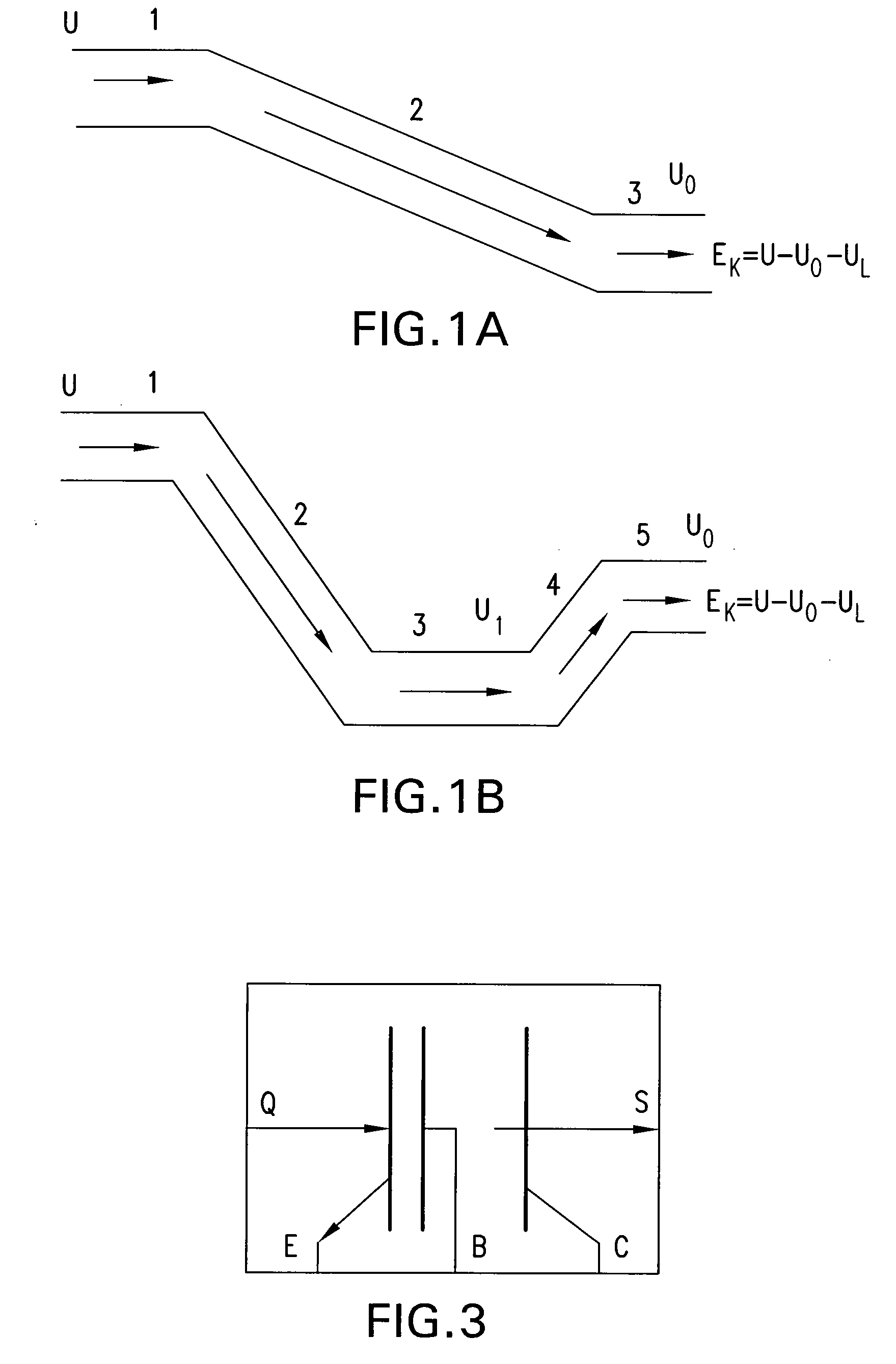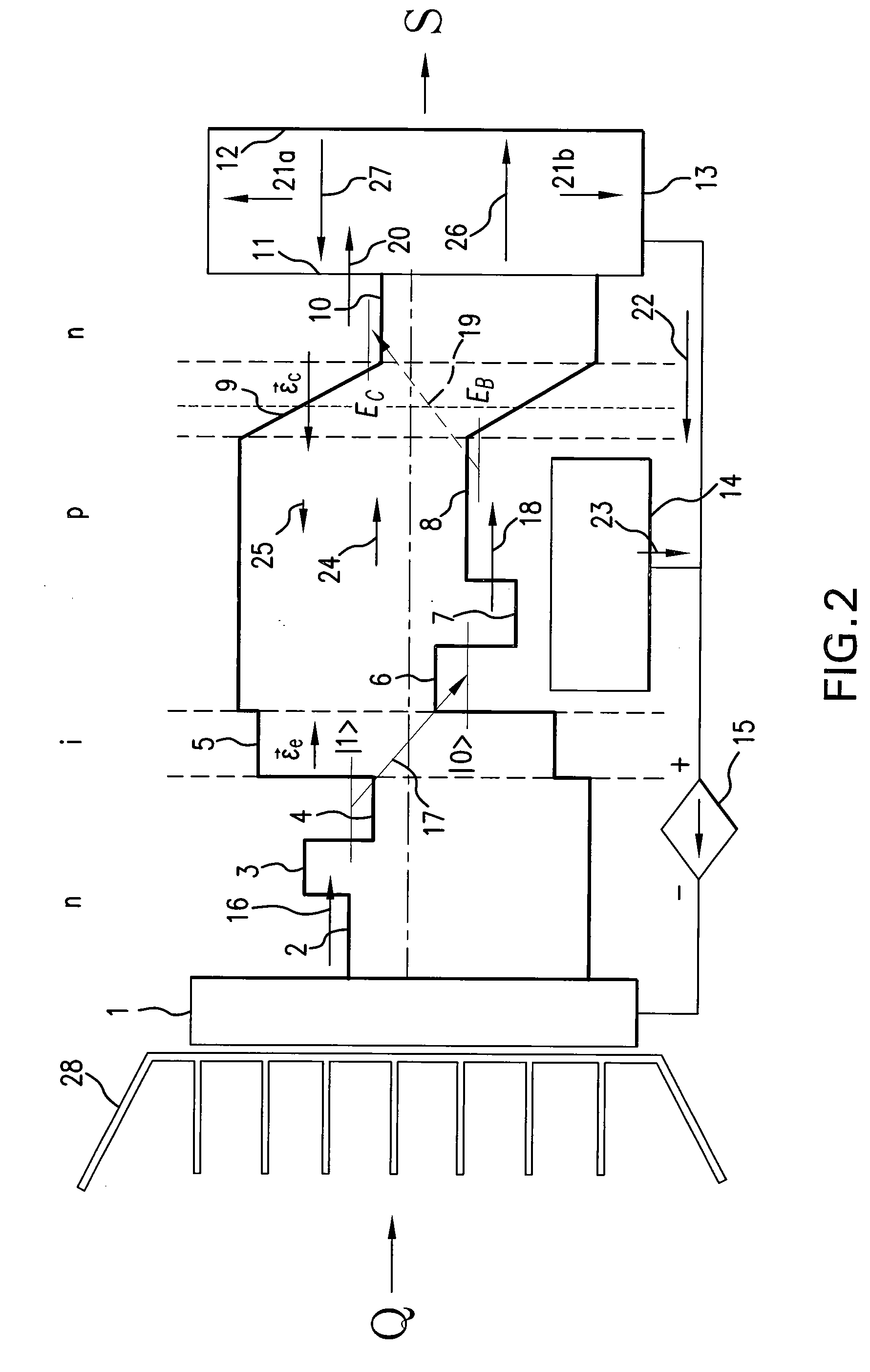Longitudinal quantum heat converter
a long-range, quantum heat converter technology, applied in the manufacture/treatment of thermoelectric devices, semiconductor lasers, thermoelectric devices, etc., can solve the problems of large installation requirements of all these energies, low efficiency of this method, and low amount of energy produced
- Summary
- Abstract
- Description
- Claims
- Application Information
AI Technical Summary
Benefits of technology
Problems solved by technology
Method used
Image
Examples
Embodiment Construction
[0041]The present invention consists in a method and a semiconductor device for the coherent electromagnetic energy production on the account of the environment energy, by an electron transfer in two steps: (1) a super radiant decay, and (2) a thermal excitation. These method and semiconductor device will now be detailed only by way of non limiting examples in relation with FIGS. 2 to 8.
[0042]As a preliminary remark, it has been noticed within the scope of the present invention, that the processes of electron decay and excitation by heat absorption depend essentially on the coupling of the active electrons with the conduction electrons, the crystal vibrations and respectively the free modes of the electromagnetic field.
[0043]According to a first aspect, the present invention concerns a longitudinal quantum heat converter as represented in FIG. 2. The semiconductor device comprises an n-i-p-n structure 2-10, a double array of quantum dots 4 and 6 on the two sides of the thin i-layer ...
PUM
 Login to View More
Login to View More Abstract
Description
Claims
Application Information
 Login to View More
Login to View More - R&D
- Intellectual Property
- Life Sciences
- Materials
- Tech Scout
- Unparalleled Data Quality
- Higher Quality Content
- 60% Fewer Hallucinations
Browse by: Latest US Patents, China's latest patents, Technical Efficacy Thesaurus, Application Domain, Technology Topic, Popular Technical Reports.
© 2025 PatSnap. All rights reserved.Legal|Privacy policy|Modern Slavery Act Transparency Statement|Sitemap|About US| Contact US: help@patsnap.com



